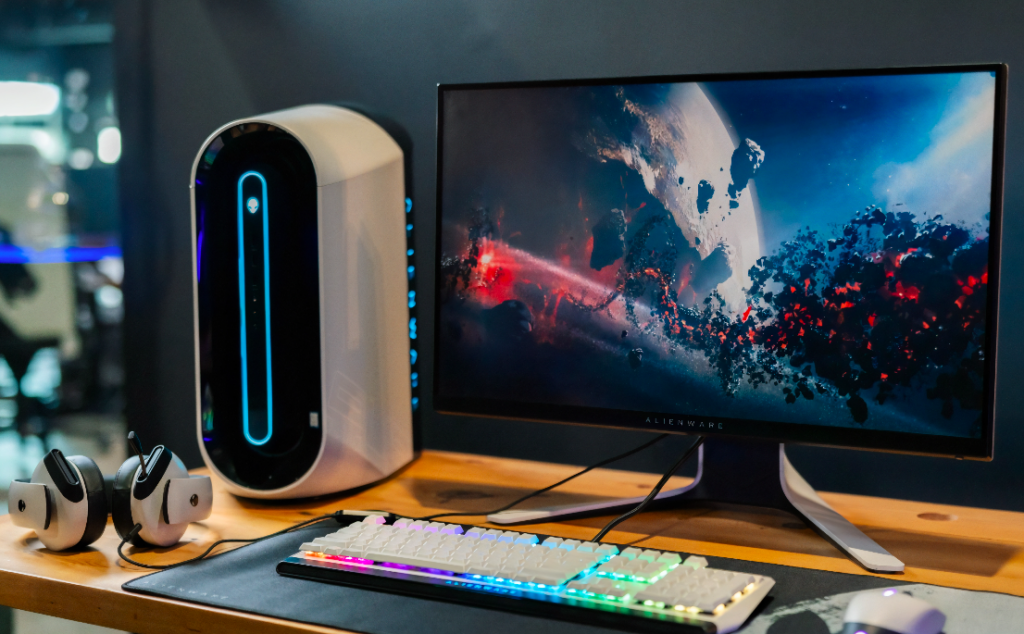It’s easy to get lost in techno-speak when trying to find a gaming monitor, but it’s actually not too hard to understand what refresh rates are. In the simplest terms, the refresh rate is how many times per second the image on your screen is refreshed (updated). There are two standard refresh rates: 60Hz and 120Hz.

Normally, a display runs at 60Hz, which means the screen is refreshed sixty times per second. With 120Hz monitors, you get twice as many refreshes: 120. This increase in Hz will generally lead to smoother game play and motion.
For the sake of simplicity, let’s just say that refresh rate equals the number of times a screen updates itself. Most monitors refresh at 60Hz, or 60 times per second. This is measured in Hertz (Hz), where 1 Hz = 1 cycle per second. The more times your screen updates within a single second, the smoother things look onscreen—a higher refresh rate means smoother gameplay.
While most users will be completely satisfied with a gaming monitor that refreshes at 60Hz, the true gamer will tell you that those extra-smooth, fluid motions can’t be replicated at just any old 60Hz. Instead, they’re found in 120Hz and 240Hz gaming monitors.
Judder/tear is a noticeable effect of low refresh rates that causes movement on-screen to appear jerky. This problem is exacerbated when there’s a lack of processing power behind the graphics card. The standard refresh rate used in monitors is 60Hz, but more powerful cards can handle refresh rates as high as 240Hz without any problems, and even monitors that are built specifically for gaming will feature up to 165Hz refresh rates or higher.
What do you gain from using a monitor with a 144Hz refresh rate or above? Do high refresh rates really make that much of a difference?
With a higher refresh rate your monitor can show you more. No more choppy transitions when playing fast-action games like first person shooters, adventure games, racing games, and action-adventure games. A higher refresh rate will smooth out screen motion in these action-packed games, giving you the edge on the battlefield that should prove extremely important for many gamers.
Page Contents
Important Factor While Choosing a Monitor?
A monitor’s refresh rate is the amount of times that your display updates the image on its screen per second. Choosing a monitor with a higher refresh rate means smoother frame rates and fewer motion artifacts when gaming. The most important thing to consider is whether or not your graphics card can drive a high-resolution, high-refresh rate display. While some mid- to entry-level cards have trouble pushing the pixels needed to drive a 2560x1440p display or a 4K (3840 x 2160p) one, most modern high-end cards can support both resolutions easily.
A gaming monitor can also be substituted for video editing. If you edit photos or videos on your MacBook then you can look at this guide for the best monitor for MacBook published on themacios reviewing best available monitors in the market right now.
A higher refresh rate means less time spent hunting for opponents in fast-moving first person shooters, while smoother visuals could mean the difference between landing a headshot or getting killed in an online multiplayer battle. When buying panels for gaming, pay attention to the refresh rate and look for features like AMD’s FreeSync and NVIDIA’s G-sync to eliminate screen tearing.
Do monitor refresh rates matter for gaming?
Well, it definitely makes a difference, but the same can be said about several other factors, including panel type and resolution.
The refresh rate of your monitor is expressed in Hertz, and the higher the number, the smoother your game will look. At eSports events, you’ll see gamers using monitors with refresh rates of up to 240Hz. Newer video games are often more demanding in terms of graphical processing, pushing PC configurations to their limits. Using a high refresh rate monitor will improve your overall gaming experience and can increase your crucial reaction time.
There are a lot of factors at play when it comes to a smooth PC gaming experience. While the monitor has a big impact, the processor, graphics card and RAM all need to be powerful as well.
How fast does your monitor need to be?
There is no official rule as to what frame rate you should use with your monitor, but it can be helpful to know how much your computer can achieve. For instance, a high performance computer that has a 3.2GHz processor may give you 120 frames per second. In comparison, a standard laptop will give you about 30 frames per second if both are running the same game or video program. It all depends on how powerful your hardware is.
if you only play slower-paced games like strategy titles, you may be perfectly happy at 60Hz.
As graphics cards get more powerful, and games either focus heavily on the GPU or utilize features like VR, higher refresh rate monitors are becoming a much more viable option. The jump from 144Hz to 240Hz t doesn’t appear to be a major one, but when you’re trying to cut down reaction times it can make all the difference in a competitive setting. This isn’t an upgrade for everyone, but if you take your gaming seriously this might be an easy way to get an edge over your competition.
